Dr. Robert M. Bernstein presented the ARTAS Hair Studio™ digital hair transplant design software and robotic recipient site creation using the ARTAS® Robotic Hair Transplant system, each advances in key aspects of hair transplantation, at the International Society of Hair Restoration Surgeons (ISHRS) annual meeting in Kuala Lumpur, Malaysia on Saturday, October 11th, 2014.
Kuala Lumpur, Malaysia (PRWEB) October 31, 2014 — Robert M. Bernstein, M.D., F.A.A.D., a world-renowned hair transplant pioneer, has presented two advances in robotic hair transplant surgery to the hair restoration industry’s largest conference; an interactive hair restoration design software suite called ARTAS Hair Studio™ and recipient site creation capability in the ground-breaking ARTAS® Robotic Hair Transplant system. Dr. Bernstein’s presentation highlights the fact that the ARTAS System is the first system to integrate the planning and performance of a hair transplant procedure. Dr. Bernstein presented these new technologies at the 22nd Annual Science Meeting of the International Society of Hair Restoration Surgeons (ISHRS) in Kuala Lumpur, Malaysia, on October 11th, 2014.
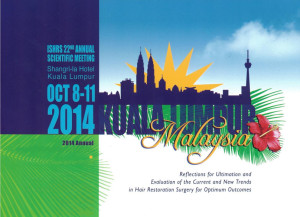 ISHRS 2014 – 22nd Annual Scientific Meeting in Kuala Lumpur, Malaysia
ISHRS 2014 – 22nd Annual Scientific Meeting in Kuala Lumpur, MalaysiaARTAS Hair Studio is a planning tool that assists the physician in the design phase of the hair restoration procedure. Dr. Bernstein’s presentation described how this software enables the physician to generate a three-dimensional model of the patient’s head and then create a treatment plan based on parameters such as the number of recipient sites, the angle of elevation of the hairs, and the direction of the hairs. With small modifications of the software, the technology can add “virtual” hair to the 3-D model and allow patients to see how the results will actually look. This will create a more interactive, educational experience for the patient and one that helps align the patient’s expectations with what is possible given their specific hair loss characteristics.
Dr. Bernstein showed how, using the new software, the surgeon can divide the treatment area into two or more sections and then program different recipient site densities for the different areas to closely mimic how hair grows in nature. The treatment plan created using ARTAS Hair Studio can be saved and then imported into the ARTAS hair transplant robot.
Once the design specifications have been imported, the ARTAS Robot can then create the recipient sites, the tiny incisions made in a patient’s scalp, into which transplanted grafts of naturally-occurring groups of 1-4 hairs, called follicular units, are placed.
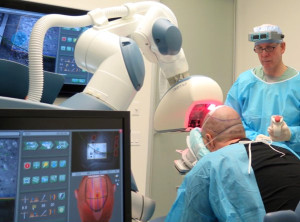 Recipient Site Creation at Bernstein Medical Using ARTAS Robotic System
Recipient Site Creation at Bernstein Medical Using ARTAS Robotic SystemIn his presentation to the ISHRS, Dr. Bernstein described several advantages of robotic site creation over manual site creation, including: the elimination of inconsistencies in creating large numbers of recipient sites by hand, precise distribution of follicular unit grafts, automatic adjustment to site densities, and automatic avoidance of existing hairs without sacrificing speed. The robot uses advanced sensory equipment and optical cues to locate potential recipient sites on the scalp and then quickly and accurately make the incisions based on the pre-programmed parameters. The robot can create up to 2,000 recipient sites in approximately one hour.
Dr. Bernstein noted that these advances represent an integration of the design and planning processes with the actual performance of the procedure. Whereas in the past, the doctor would describe the treatment plan to the patient and then manually implement the prescribed plan, today’s computerized robotic system allows the physician to digitally design the hair transplant treatment plan, and then that plan directs the robot in the operating room.
Restoration Robotics Inc., the company that developed the robot, collaborated with Dr. Bernstein, using the Bernstein Medical – Center for Hair Restoration facility as a beta-testing site, to upgrade the ARTAS robot and test these and other advances. The ultimate goal is to deliver a robot that will mechanize every surgical aspect of an FUE hair transplant procedure.
About Robert M. Bernstein, MD, MBA, FAAD
Dr. Bernstein’s published articles on follicular unit hair transplant procedures have been called “Bibles” for the industry. He has received the Platinum Follicle Award, the highest honor in the field. He is a fellow of the International Society of Hair Restoration Surgery (ISHRS). Dr. Bernstein has appeared as a hair restoration expert on many notable television programs and in many news and lifestyle publications over the years. Examples include: The Oprah Winfrey Show, The Dr. Oz Show, The Today Show, Good Morning America, ABC News, CBS News, New York Times, Wall Street Journal, Men’s Health Magazine, and more. He is co-author of Hair Loss & Replacement for Dummies. Dr. Bernstein graduated with honors from Tulane University, received the degree of Doctor of Medicine at the University of Medicine and Dentistry of NJ, and completed his training in Dermatology at the Albert Einstein College of Medicine. Dr. Bernstein is a Clinical Professor of Dermatology at Columbia University.
About Bernstein Medical – Center for Hair Restoration
Bernstein Medical – Center for Hair Restoration, the facility Dr. Bernstein founded in 2005, is dedicated to the diagnosis and treatment of hair loss in men and women using the most advanced technologies. The state-of-the-art facility is located in midtown Manhattan, New York City and treats patients from around the globe. In 2011, Bernstein Medical became one of the first practices in the world to offer Robotic FUE procedures using the image-guided, computer-driven technology of the ARTAS Robotic System. Bernstein Medical is a beta-testing site of the robot’s new capability including the creation of recipient sites and Dr. Bernstein is a medical advisor to the company that produces the robotic system, Restoration Robotics, Inc. The board-certified physicians and highly-trained clinical assistants at Bernstein Medical take pride in providing the highest level of treatment and care for all patients.
Posted by Robert M. Bernstein M.D. 

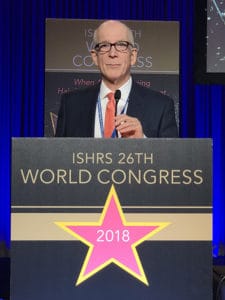

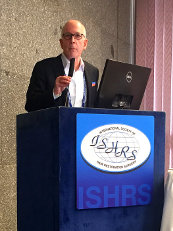
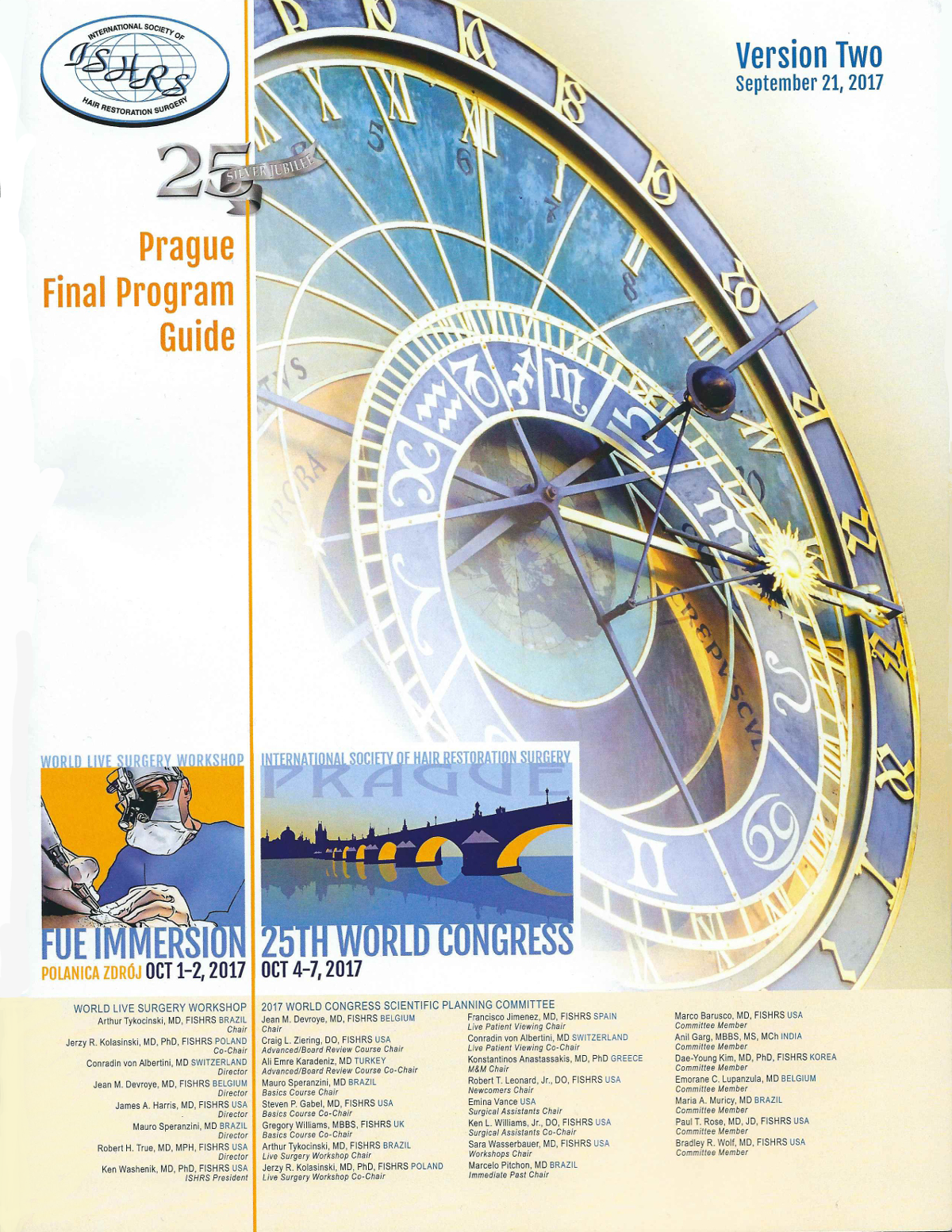
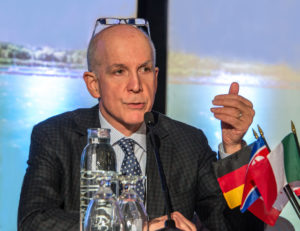
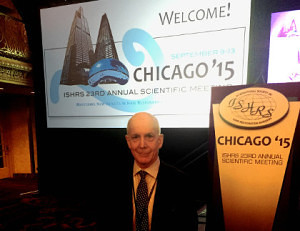
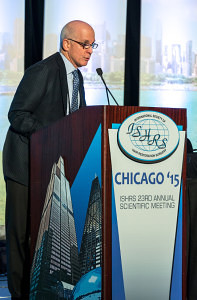
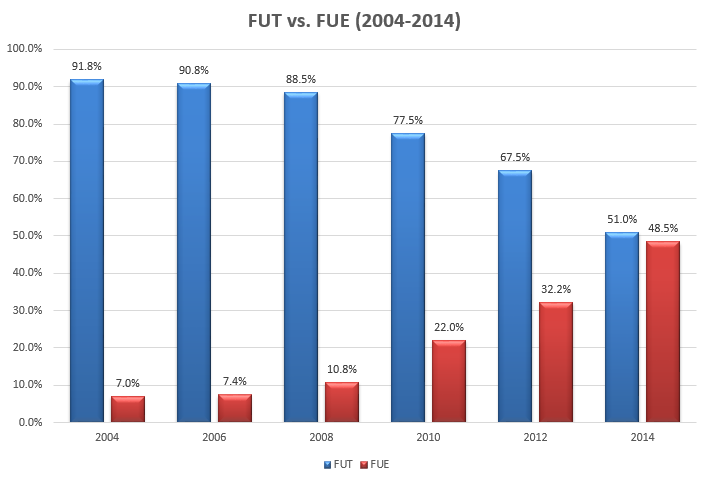



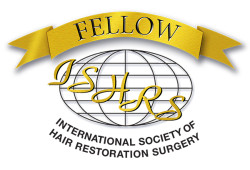
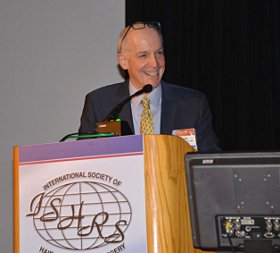 The 21st Annual Scientific Meeting of the International Society of Hair Restoration Surgery was held in San Francisco from October 13 through 26, 2013. The meeting covers the most important scientific and clinical advances in the field of
The 21st Annual Scientific Meeting of the International Society of Hair Restoration Surgery was held in San Francisco from October 13 through 26, 2013. The meeting covers the most important scientific and clinical advances in the field of 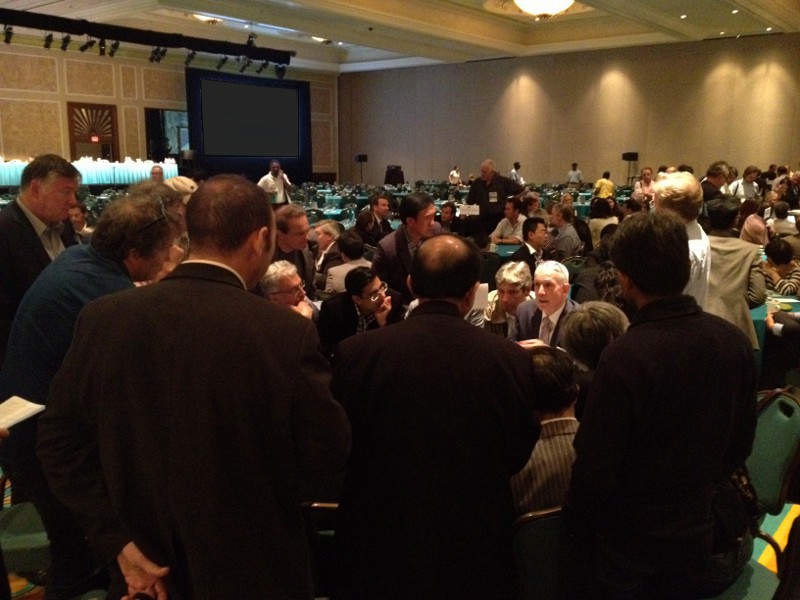
 Eyebrow transplant procedures are growing in popularity. More women are realizing how much damage they can cause to their appearance by overplucking, shaping, and over-styling their eyebrows. Today, the New York Times reports on the trend of repairing eyebrows with hair transplant techniques and the use of camouflage products to cover up eyebrows that have been “tamed into oblivion.”
Eyebrow transplant procedures are growing in popularity. More women are realizing how much damage they can cause to their appearance by overplucking, shaping, and over-styling their eyebrows. Today, the New York Times reports on the trend of repairing eyebrows with hair transplant techniques and the use of camouflage products to cover up eyebrows that have been “tamed into oblivion.” To give hair restoration surgeons more precise diagnostic information in their evaluation for patients considering hair transplants, Dr. Bernstein uses the techniques of densitometry and video-microscopy to analyze the scalp under high-powered magnification.
To give hair restoration surgeons more precise diagnostic information in their evaluation for patients considering hair transplants, Dr. Bernstein uses the techniques of densitometry and video-microscopy to analyze the scalp under high-powered magnification.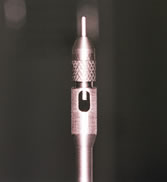 In a new article appearing on the cover of Hair Transplant Forum International, the official publication of The International Society of Hair Transplant Surgeons (ISHRS), pioneering hair transplant surgeon Robert M. Bernstein MD, along with his colleague Dr. William R. Rassman, recently revealed details about a “New Instrumentation for Three-Step Follicular Unit Extraction.”
In a new article appearing on the cover of Hair Transplant Forum International, the official publication of The International Society of Hair Transplant Surgeons (ISHRS), pioneering hair transplant surgeon Robert M. Bernstein MD, along with his colleague Dr. William R. Rassman, recently revealed details about a “New Instrumentation for Three-Step Follicular Unit Extraction.”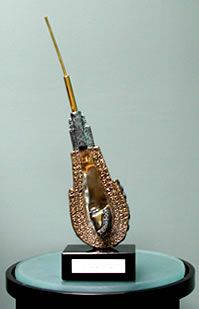 The
The 



